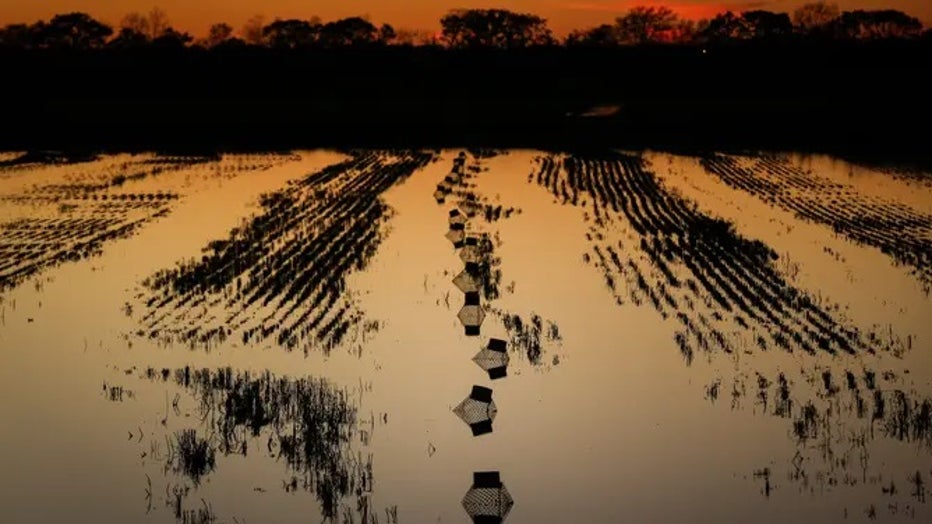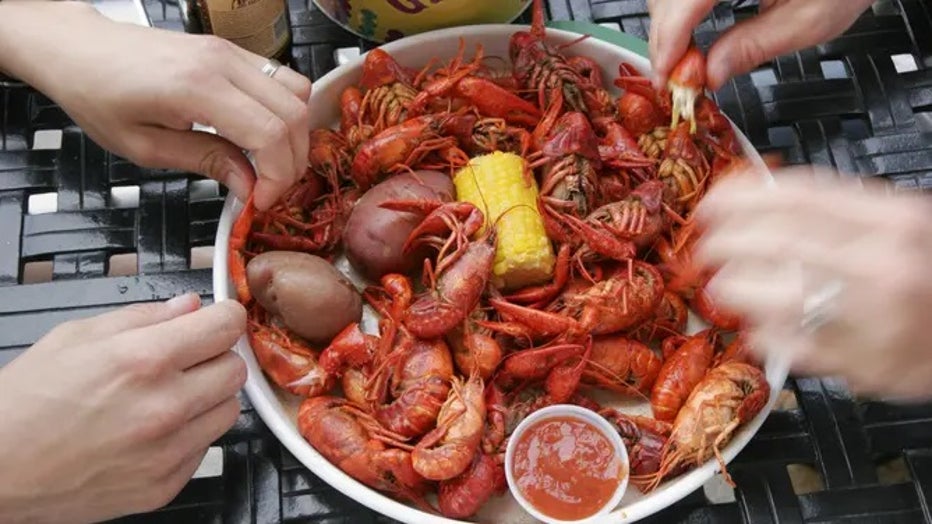Louisiana crawfish harvest down as much as 90% in shortage that could cripple industry for years
The U.S. Department of Agriculture approved emergency financial relief for struggling crawfish farmers and fisherman for a 2024 harvest that is down 50-90% across Louisiana, according to the Louisiana State University Agricultural Center. However, the cash might not be enough to save next year's season.
"Louisiana’s crawfish aquaculture industry will experience impacts from the 2023 drought for several seasons before an economic recovery is complete," wrote the Ag Center's Greg Lutz on TheFishSite.com. "Should drought conditions return before that takes place, the industry will be drastically transformed from the one we have come to know."
Crawfish season is winding down across Louisiana, which produces about the majority of the nation's crawfish every year, according to the Louisiana Crawfish Promotion and Research Board. Just in time for the summer heat, the mudbugs will burrow into the mud to spawn. But last year, a series of weather and climate disasters killed many. The high mortality rate of the crawfish meant fewer seeds for next year's crop.
Drought, lack of rain, freeze took toll on crawfish
A historic drought in 2023, along with record summer heat, dried out the mud by late July through September when crayfish burrow into mud to spawn. They stay put until late fall when the usual heavy rains soften the plugs of clay soil that the moms carefully built to seal in the water, according to Lutz.
"The mama crawfish don't come out until they hear the thunder," wrote Lutz.
Rain is usually not an issue for hurricane-prone Louisiana.
However, the mud dried up and was too hard for mothers and babies to dig out of. Trapped moms resorted to eating their young or starving, according to a Food and Wine report. Many suffocated because their gills dried up after cracks formed in the mud, allowing in dry air.
SEE THE INVASIVE, AUSTRALIAN CRAWFISH DISCOVERED IN TEXAS
The animals that did survive were very small from lack of food. A January cold snap also stunted growth and killed off much of their food source. Both farm and wild-raised crustaceans were too small to sell. Producers reported no young crawfish in their ponds until early December, when farmers would begin to see harvestable animals in a normal year, according to the Ag Center.
"Looks like we a little less than 50% of the catch up until the end of April," rice and crayfish farmer Paul Zaunbrecher told the Ag Center. "The revenue is probably 75% of what it was last year. So the price has made up for it somewhat."
He is talking about a four-times price hike at the height of the season for a pound of boiled crawfish. FOX Weather checked prices and found they had soared to $16 per pound when, a year earlier, one pound went for $4-$5.
Some farmers abandoned the land
Another part of the problem is that many farmers chose not to flood their crayfish grounds. Zaunbrecher was just one of the many farmers to abandon acres.

File: Farmer Chad Hanks walks by dry cracked earth on his farm where he usually grows crawfish on October 10, 2023, in Kaplan, Louisiana. (Getty Images)
"Some ponds never came into production because of the lack of crawfish or the inability to flood the ponds due to surface water issues," the Ag Center's Kenneth Gautreaux said in a video. "Some farmers feel that they were fortunate to catch what they could."
The state only saw 44% of its normal rainfall from May-October 2023, and the average high was 3 degrees warmer than average. Harvesting fresh water came at a premium, and the Mississippi River hit record low levels, allowing salt water to enter from the Gulf of Mexico.
"As drought conditions intensified going into the autumn of 2023, it became apparent that many producers in the southwestern region of the state, who normally rely on surface water from natural watersheds and irrigation canals, would be unable to flood their ponds at all, due to excessive salinity caused by saltwater intrusion," Lutz wrote. "Many producers in other regions were also unable to flood their ponds due to low water levels."
SALT WATER THREATENS LOUISIANA DRINKING WATER SUPPLY AMID MISSISSIPPI RIVER DROUGHT

File: The sun sets over a field with crawfish traps near Crowley. (Jon Shapley/Houston Chronicle / Getty Images)
The Ag center estimated the potential losses to be about $140 million to the state's $230 million a year crawfish industry. The crawfish add $500 million to Louisiana's economy and employ about 7,000 people.
Industry hurt for years to come
This season's losses will mean losses next year, too.
"Crawfish have a cycle, and at the end of the season, typically, around June, there's still a lot of crawfish left in the ponds," Laney King of The Crawfish App told FOX Weather in an earlier interview. "We call this our carryover crawfish crop, and we rely on these carryover crawfish to then reproduce and create the next season's crop."
Lutz worries that mature crawfish stock will be hard to come by at any price. He estimates that the state would need about 1.5 billion pounds of mature stock to reestablish what was lost, along with the usual stock for farms that rotate between rice and crawfish. The state only harvests 100-120 pounds in an average year, according to Michigan State University.

File: Boiled crawfish. (Jeff Greenberg/Universal Images Group)
Several lawmakers made appeals to the government early in the year. The governor issued a disaster declaration for the industry in early March, which allowed the Small Business Administration to make low-interest federal disaster loans available.
"Louisiana’s extreme drought conditions have affected our farmers, our economy, and our way of life," Louisiana Gov. Jeff Landry said in a statement. "All 365,000 crawfish acres in Louisiana have been affected by these conditions. That is why I am issuing a disaster declaration. The crawfish industry needs all the support it can get right now."
The USDA waited months to amend the Emergency Assistance for Livestock, Honeybee and Farm Raised Fish Program to open funds to crayfish farmers. The last time crayfish producers were included was due to a deep freeze in 2021, according to Seafood Source.
About 85% of the state's crawfish is farmed. None of the state is currently in drought.
LINK: Get updates and more on this story at foxweather.com.

